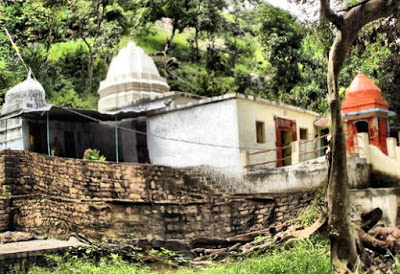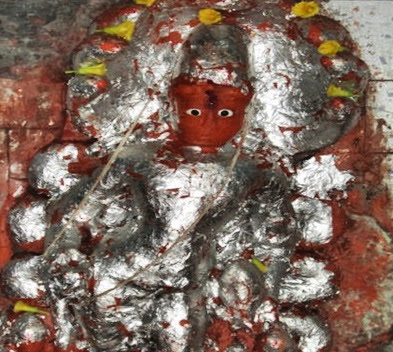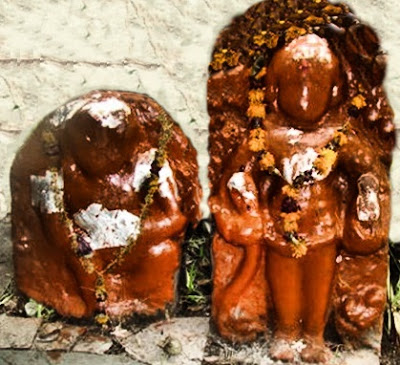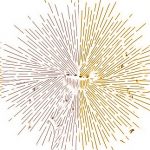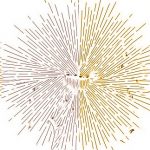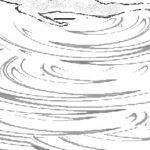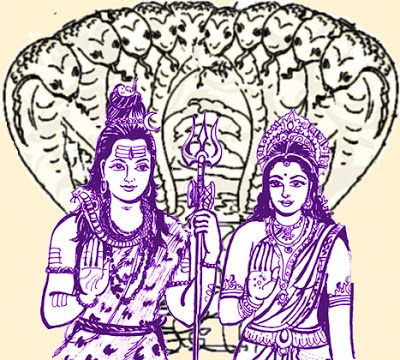

Nag Thakshak is one of the eight most important Serpents in the clan of Divine Serpents and has reference in epic Mahabharata. The other seven Divine Serpents are – Nanda also called Nagaraja, Upananda, Sagara, Vasuki, Manasa, Anantha also called Anavatapta and Utpalaka. Nag Thakshak reportedly ruled Thakshasila a new Kingdom which he created after the episode of burning of Khandava Forest by Janameya occurred. As per Shrimad Bhagavatam Nag Thakshak belonged to Ikshavaku dynasty and born as Serpent due to a curse he had inherited in his previous birth.
According to one of the folklores, Nag Thakshak stays in penance on the top story of the Mahakaleshwar temple in Ujjain which is opened only once in a year on Nag Panchami day to allow devotees offer prayers to Lord Shiva and Parvathi Devi seated on the coiled bed of Nag Thakshak in that room. It is believed that Nag Thakshak in the name of Nagchandreswar is present there in invisible form and perform one crore mantra Pooja throughout the day to Lord Shiva. On the day of every Nag Panchami, in the presence of celestials, Gods and others from Devaloga, Nag Thakshak performs Pooja to Lord Shiva and Parvathi devi while on rest of the days divine Nag Thakshak remains seated in penance, chanting one crore japa which Lord Shiva and Parvathi accept in silence. What is the story of how Nag Thakshak came and settled here?
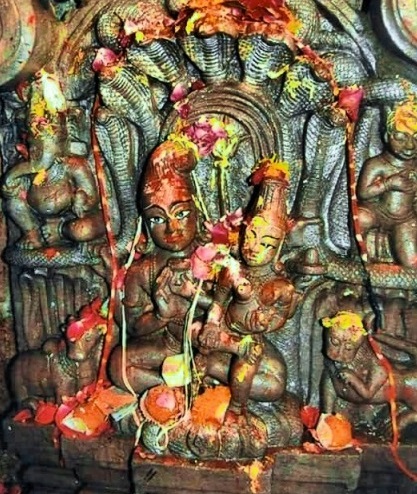
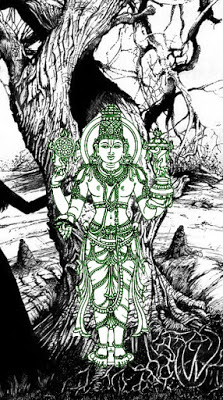
Came the seventh day and there in the Palace, King Parikshit locked himself in a room tightly closed from all sides and none were allowed to enter inside. Not even a gap was left open. Even food was thoroughly checked and given through a small gap which was also sealed after food is given so that no serpent could enter inside. Nag Thakshak took the form of a small ant and sat under the food carrier to enter into the room where King Parikshit was hiding. Once entered inside the room in the form of a small ant he regained his original form of Serpent and bit the King to death. After Nag Thakshak killed the King Parikshit, he escaped from there similarly, went back to Mandsaur village in Madhya Pradesh to stay with his family and released imprisoned Lord Danvanthri. He also sought pardon for his act and explained him the reason.
Death of his father by a snake angered Parikshit’s son Janameya who in vengeance began Naga Yagna in order to kill entire snakes in the universe. He began performing Nag Yagna and burnt Khandava forest completely where hundreds and thousands of snakes resided. As the Naga Yagna commenced and proceeded, many snakes in the universe were pulled into the yagna fire and burnt to death leaving only few more to die. Janameya decided to continue the Yagna till the entire clan of serpents were burnt to death.
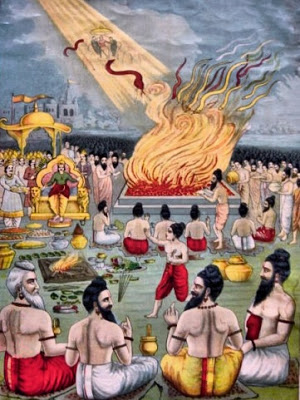
Next to die in Yagna fire was Nag Thakshak and his family who were getting slowly absorbed by the powers of mantras chanted in the yagna. Vasuki, one other important Kings of snakes which remained alive till then was very much upset. In order to save the remaining serpents along with Nag Thakshak she sought the help of her sister’s son named Aasteek, who was also a great scholar in the Nag clan and requested him to ensure that the Yagna of Janameya did not succeed fully. Aasteek agreed to help and went to the Yagna site in disguise of a Brahmin priest and began chanting hymns in praise of the Yagna.
Unaware of who the priest was, Janameya felt relieved of his mental tension as he heard the melodious hymns which he had never heard before, and went near Aasteek, offered him respects, praised him severely for the wonderful recital which relieved his mental tension and promised to fulfill any wish that Aasteek may ask. Relaxed Aasteek requested for the stoppage of the Yagna and to bring back the burnt snakes to life again. Janameya was stunned as he never expected it and which if agreed would completely wreck his vow and therefore requested Aasteek to seek fulfilment of any other wish other than the one he had asked, but Aasteek pointed out that the act of the Yagna was borne out of personal vengeance and was not meant for the benefit of the universe since the creatures of all types have been created by Lord Brahma for specific reasons and Janameya had no authority to banish the creations without consent from the Lord of creation. Moreover Janameya was trying to shield the sinner Parikshit who insulted one of the greatest Rishies who was meditating for universal welfare. Janameya argued for some time justifying his action and tried to convince, but since Aasteek was firm in his demand and refused to accept any other offer from Janameya, he had no other option but to stop the Yagna, lest Janameya would have inherited curse of Aasteek in disguise of a Brahmin priest. Bowing to the demand of Aasteek, Janameya stopped the Yagna and brought back to life all those snakes which had so far burnt in the fire. Naga Thakshak thus got his life saved. After the burnt snakes got back their life, at the request of Janameya, exercising his extraordinary power Naga Thakshak sent the wandering soul of dead King Parikshit to heaven since he had no power to give back the life of the King who was destined to die as ordained by the creator in the manner he died.
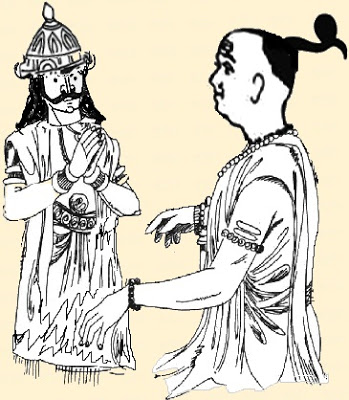
The amazing statue of Nagachandreswar belonging to 11th century was found by a King in Nepal and brought from there and enshrined above Mahakaleshwar temple which has three tier Gopura. In the universe only in Ujjain Nagachandreswar temple Lord Shiva and his consort Parvathi devi are seen seated on the coiled body of divine Nag Thakshak whose ten hoods rest as shade above their head. Only other Lord Vishnu rests on the coiled body of divine Nag Adi Shesha another clan of serpent Gods. This is a rarest of rare scene one witness here.
It is generally believed by historians that King Parmar (folklore refers the king as Bhoj Raja) in whose dream the Lord appeared and directed him to build the temple enshrining the statue of Nagachandreswar, might have built this temple in around 1050 AD and sometime in 1732 King of Gwalior Shri Ranoji Scindia renovated the then damaged shrine. Therefore the gates of Nagachandreswar Temple are opened only on Nagapanchami.
The surviving serpents in the universe built a small temple in honour of Nag Thakshak in the very same place near Mandsaur in Madhya Pradesh where Nag Thakshak was staying with his wife before proceeding to kill the King Parikshit and imprisoned Lord Danvanthri. It was later built into a temple on earth for Nag Thakshak by the locals. This is the only temple in the universe that exist for divine snake Nag Thakshak. The temple is in the village called ‘Dasnaval’ near Khandwa in Madhya Pradesh. Locals call the name of the temple as ‘Thakaji Mandir’ or ‘Thaksheshwar Mandir’ which has the statue of Nag Thakshak along with his wife and son. The tree where Lord Danvanthri was reportedly imprisoned is also seen there.The photos from temple site:-
